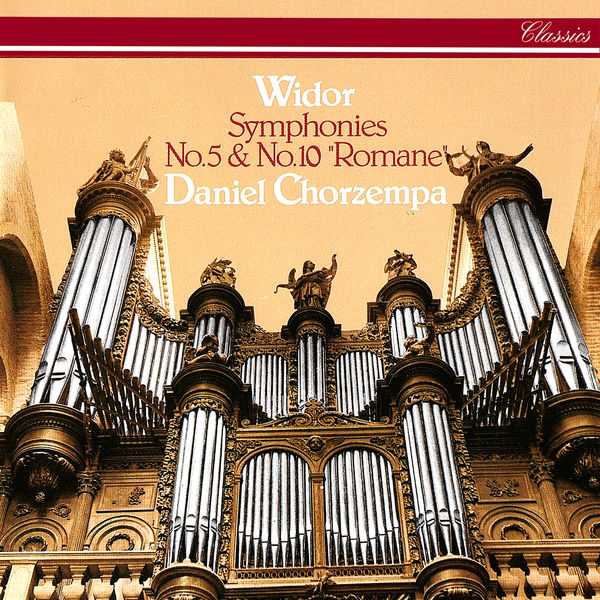
Composer: Charles-Marie Jean Albert Widor
Performer: Daniel Chorzempa
Format: FLAC (tracks)
Label: Philips
Catalogue: 4100542
Release: 1982
Size: 243 MB
Recovery: +3%
Scan: cover
Symphony No.5 in F minor, Op.42 No.1 for Organ
01. 1. Allegro vivace
02. 2. Allegro cantabile
03. 3. Andantini quasi allegretto
04. 4. Adagio
05. 5. Toccata (Allegro)
Symphony No.10, Op.73 for Organ – “Roman”
06. 1. Moderato
07. 2. Choral (Adagio)
08. 3. Cantilène (Lento)
09. 4. Finale (Allegro – Andante – Andante quasi Adagio)
Writer of ten Organ Symphonies and four Symphonies for Organ and Orchestra, Charles-Marie Widor is one of the most famous representatives of romantic French organ music. Written for the great symphonic organs produced by manufacturer Aristide Cavaillé-Coll, his works are still cherished today by organists the world over. American organist Daniel Chorzempa recorded this album on 18 May 1982 using a great Cavaillé-Coll instrument in St Sernin’s Basilica in Toulouse. His stunning technique and his pianist’s instinct to play from the heart see him taking on some of the most difficult works by Liszt, Reubke and Widor. The Fifth Symphony F Minor is still the most famous, with the final Toccata which has been a favourite with organists and audiences alike since its first outing in 1879. It is frequently played at royal weddings, notably in Denmark and the UK. In the view of many commentators, 1900’s Tenth and final symphony, subtitled Romane, represents the summit and the summation of Widor’s art. Inspired by the organ of St Sernin and the Romanesque basilica in which it is set, as well as readings of Franz Liszt and César Franck. In this final score, Widor has succeeded in reconciling profane organ music and religious art, incorporating Gregorian themes into the structure of the work.